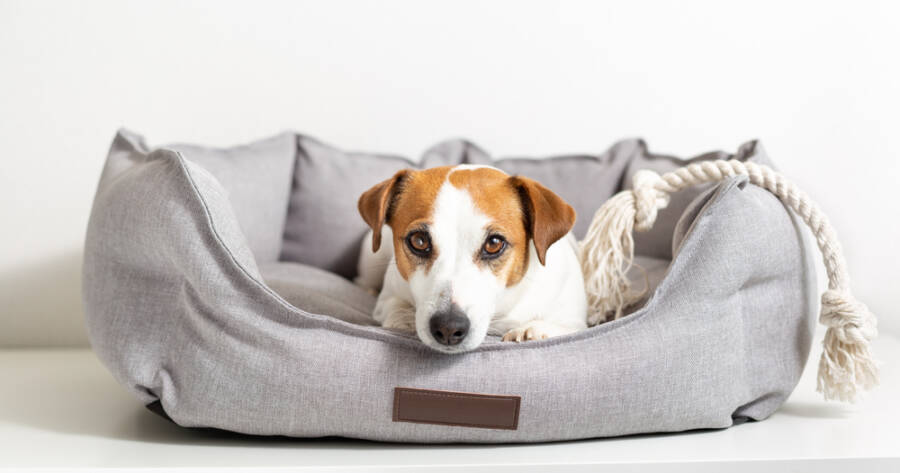Keeping pets entertained can be both a delightful and rewarding experience, enhancing the bond between you and your furry friend. While commercial toys can sometimes come with a hefty price tag, creating your own pet toys can be an economical and fun alternative. With just a little creativity and everyday household items, you can craft engaging toys that may captivate your pet’s interest for hours. Uncover several DIY pet toy ideas, that provide a variety of options to help keep your pet active and stimulated.
The Benefits of DIY Pet Toys
Making your own pet toys might not only be budget-friendly but also allows you to customize items to suit your pet’s specific preferences and needs. DIY toys may offer opportunities to use safe, non-toxic materials that you can monitor throughout the crafting process. This personalized approach could cater to pets with unique preferences or sensitivities that commercial toys might not address.
Engaging your pet in playtime has been associated with numerous benefits, from reducing behavioral issues and providing mental stimulation to promoting physical fitness. Trying different types of toys can keep things interesting for your pet, potentially preventing boredom and its related challenges. Furthermore, creating DIY toys can become a creative outlet for you, giving you the chance to explore and innovate in satisfying ways.
DIY Toy Ideas for Dogs
Dogs are often enthusiastic playmates, eager to chase, chew, and tug. You might start with a classic rope toy, perhaps by braiding old T-shirts or clean rags into a durable tug toy. This project can be simple yet effective, and the texture may appeal to dogs that enjoy chewing.
An interactive treat dispenser could also capture your dog’s attention. Try using a plastic bottle or a cardboard tube, filling it with small treats, and watching your dog work to retrieve them. Be cautious to ensure the materials are sturdy enough to prevent ingestion of any pieces, and always supervise playtime with DIY toys for safety.
For fetch-loving dogs, transforming an old tennis ball by cutting a slit to insert treats might provide added incentive during play. Alternatively, an old sock with a tennis ball inside can become a throwing toy, engaging both you and your dog in a lively game of catch.
Creative Toys for Cats
Cats often enjoy a challenge, so creating toys that stimulate their natural hunting instincts might keep them entertained. A DIY feather wand could be an enticing option. Attach a feather or a small piece of fabric to a string, and then to a pole or stick, for a feathered wand that might encourage hours of pouncing and swatting.
Cardboard boxes are another versatile resource for entertaining cats. Create a homemade puzzle toy by cutting holes into a box, placing a few toys or treats inside, and allowing your cat to explore and fish them out. Such activities could simulate hunting and foraging behaviors.
A simple pom-pom made from yarn can become an intriguing toy, while stuffing a sock with catnip and sewing it shut creates a soft, appealing item for batting and carrying. Regularly checking that all materials remain intact and devoid of loose threads might ensure continued safe play.
Toys for Small Animals
Small pets like rabbits, guinea pigs, and hamsters can benefit from toys that encourage exploration and interaction. Tunnels made from paper towel rolls or small cardboard boxes might inspire them to crawl and peek, utilizing their natural curiosity.
Creating a foraging box using a small container filled with hay and treats can appeal to their foraging instincts. Be sure that the container is chew-safe and that all materials are appropriate for their dietary requirements.
A DIY chew toy can be constructed by stringing together pieces of untreated wood, safe nuts, or vegetables. This approach could help keep their teeth healthy and offer an activity that aligns with their chewing habits.
Ensuring Safe and Engaging Play
Though crafting your own pet toys can be a rewarding endeavor, safety should remain a top priority. Regularly inspecting toys for wear and tear, removing any loose or broken pieces, and supervising playtime may help prevent accidents. Introducing a variety of toys might keep playtime fresh and exciting, catering to your pet’s changing interests and needs.
Finally, observing your pet’s interaction with different toys could provide insights into preferences and help you innovate designs that your pet will love. Whether it’s a tug, fetch, chase, or chew, understanding these preferences might maximize the enjoyment and utility of your DIY creations.
Crafting Joy, One Toy at a Time
DIY pet toys offer a unique blend of creativity, personalization, and affordability, potentially enhancing the playtime experience for both you and your pet. With thoughtful design and mindful attention to safety, these homemade creations could become cherished elements of your pet’s daily routine, encouraging physical activity, mental stimulation, and bonding time.
By experimenting with different materials and configurations, you may discover new ways to enrich your pet’s environment, making each day feel like an adventure. As you embark on this hands-on project, the joy of seeing your pet’s excitement might prove to be the greatest reward of all, underscoring the depth of your shared connection.

